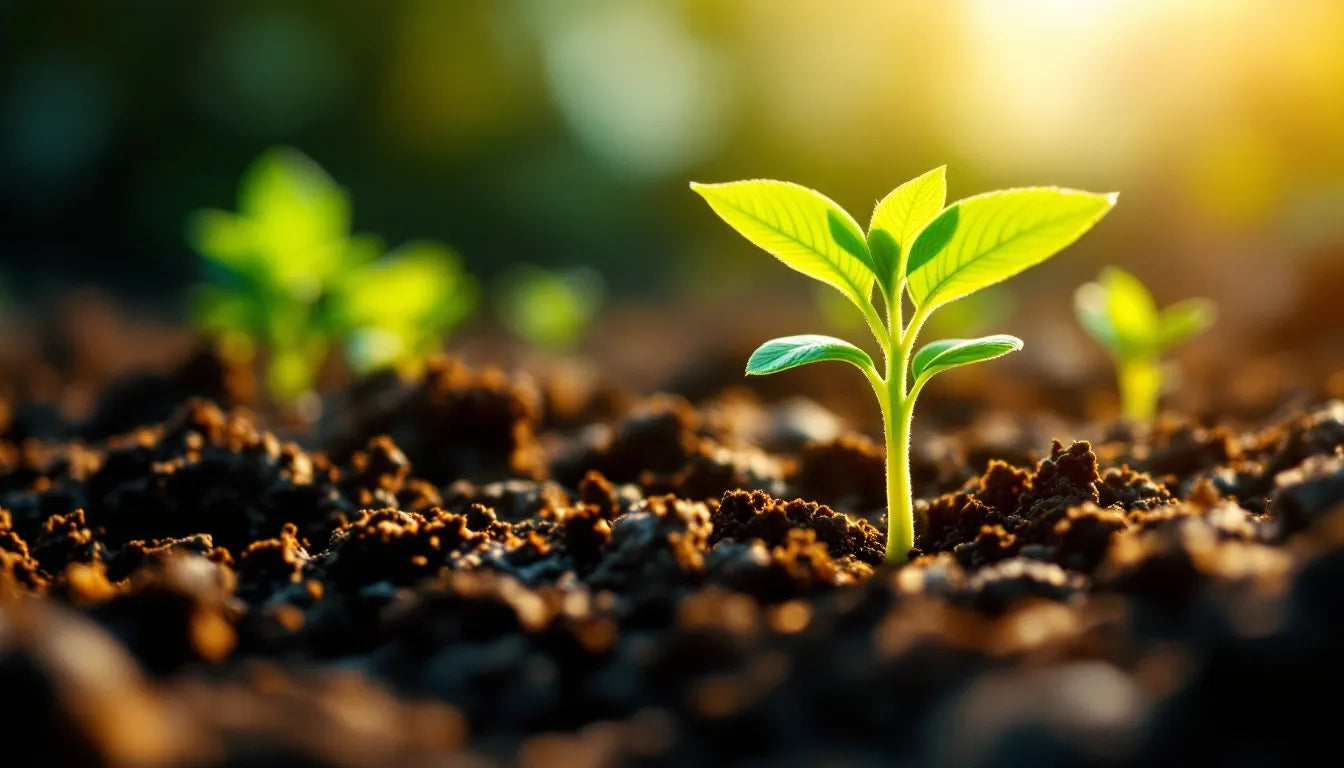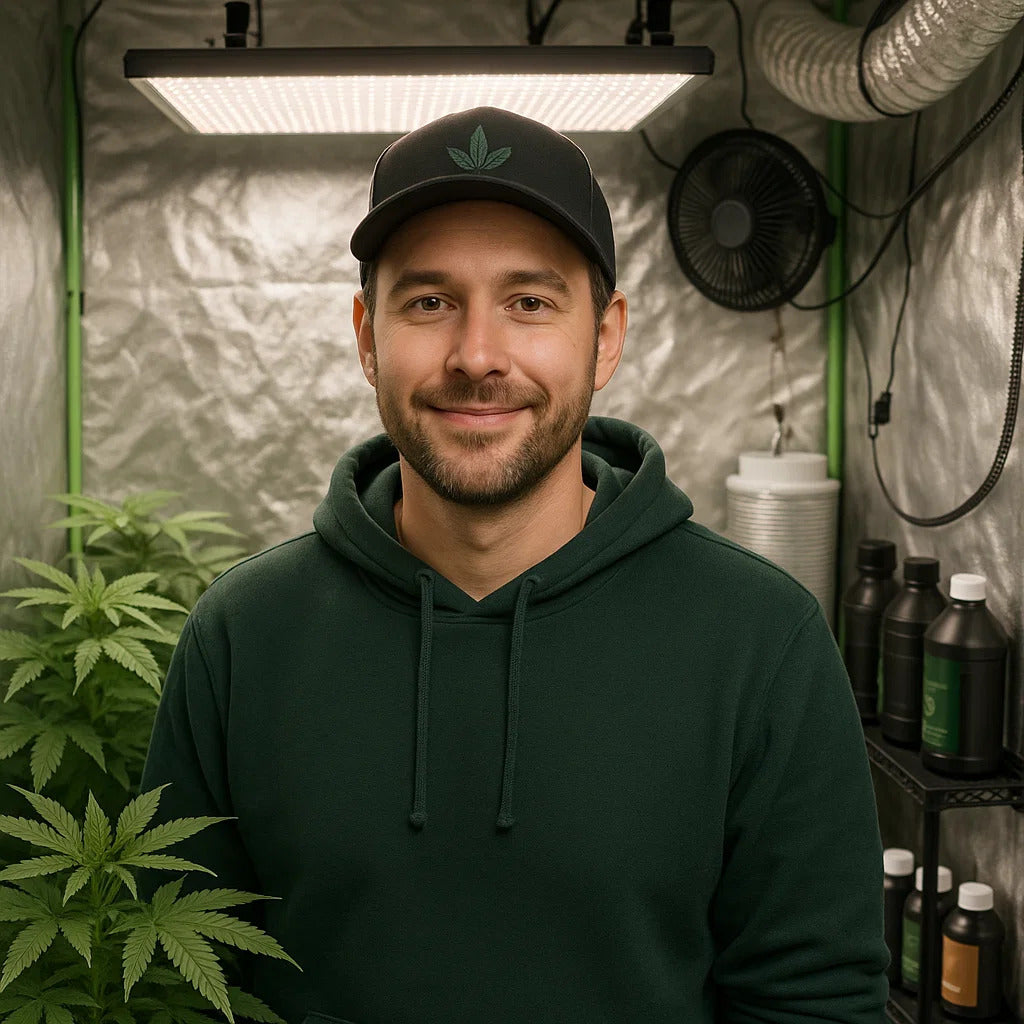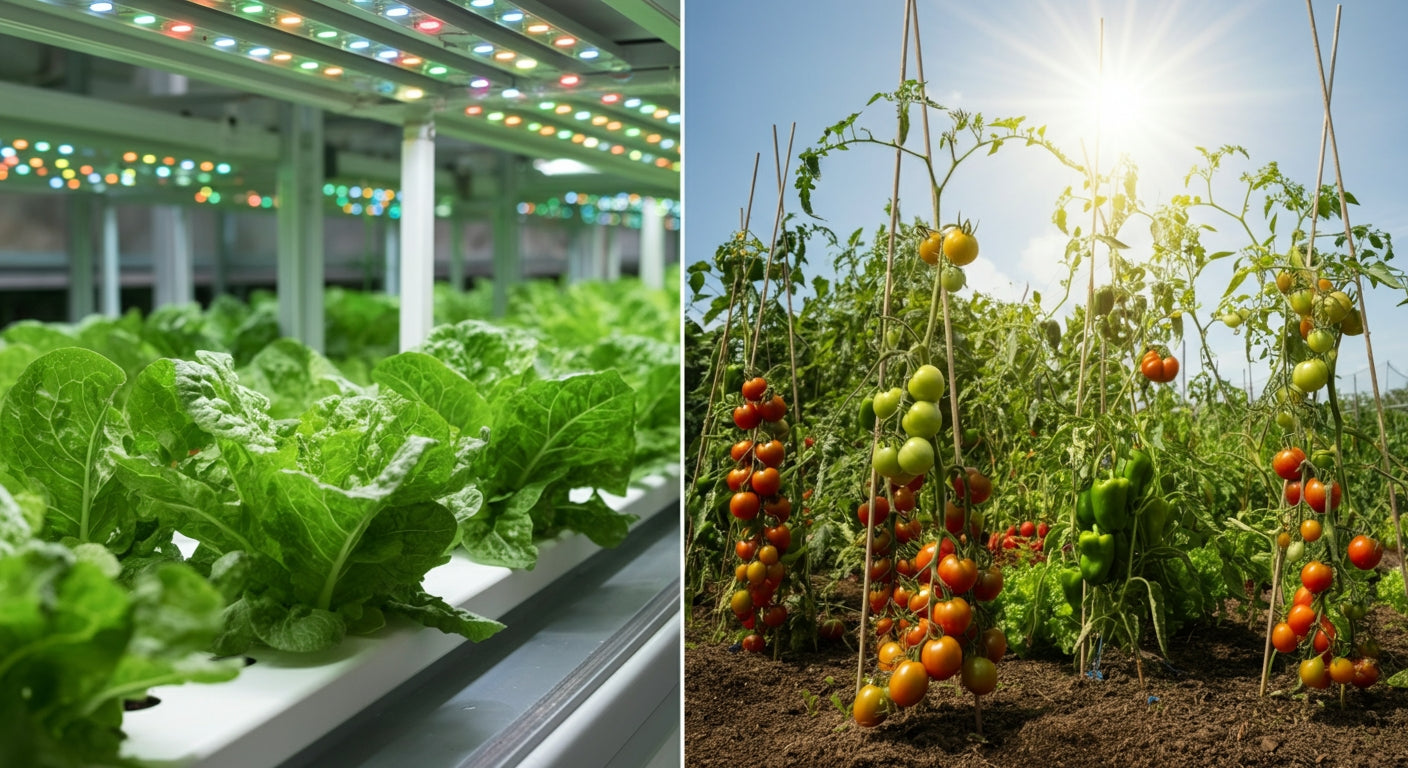
Essential Tips for Growing Plant Successfully: Your Complete Cultivation Guide
Growing plants successfully requires mastering fundamentals that separate thriving plants from disappointing harvests. Whether you're a complete beginner or improving your technique, understanding the essential factors—environment, genetics, nutrition, and timing—determines your cultivation success more than any single piece of equipment or advanced technique.
The difference between average and exceptional grows isn't mysterious or complicated. It comes down to consistently applying proven practices throughout each growth stage while avoiding common mistakes that limit plant potential. This guide distills years of growing wisdom into actionable tips that deliver professional results regardless of experience level.
Start with Quality Genetics
Selecting appropriate seeds or clones establishes your grow's foundation. Poor genetics produce disappointing results no matter how perfect your environment or technique. Quality genetics from reputable seed banks or licensed sources ensure plants express desired traits including potency, yield, disease resistance, and specific cannabinoid/terpene profiles.
Autoflowering varieties simplify growing for beginners by eliminating light schedule management. These strains automatically transition from vegetative growth to flowering after 3-4 weeks regardless of photoperiod, completing full lifecycles in 10-14 weeks. Autoflowers excel in small grow tent setups where quick turnarounds and compact sizes matter. Learn more in our guide on how to grow a plant.

Photoperiod strains offer greater control over plant size and harvest timing through light cycle manipulation. These traditional varieties remain in vegetative growth under 18-24 hours of daily light, transitioning to flowering when you switch to 12/12 light/dark schedules. Photoperiod strains generally produce larger yields and allow extensive training techniques impossible with quick-flowering autoflowers.
Strain selection impacts growing difficulty, timeline, and final product characteristics. Indica-dominant strains typically flower in 7-9 weeks with compact growth patterns ideal for limited vertical space. Sativa-dominant varieties may require 10-14 weeks flowering with taller, more stretchy structures needing height management. Hybrid strains balance these characteristics for intermediate growing profiles. Check our plant growth stages guide.
Create the Optimal Growing Environment
Environmental control separates successful growers from frustrated beginners. Plants thrive within specific temperature, humidity, and airflow parameters that you must maintain consistently throughout all growth stages. Even brief environmental extremes can stress plants, reducing yields and inviting pests or diseases.
Temperature management requires maintaining 70-85°F during vegetative growth and 65-80°F during flowering. Higher temperatures stress plants, accelerate pest reproduction, and reduce potency. Lower temperatures slow growth and can trigger nutrient deficiencies. The Gorilla GXi Temperature & Humidity Sensor provides laboratory-grade monitoring (±0.3°C accuracy) that enables precise environmental control. For cooling strategies, read our guide on keeping grow tents cool.
Humidity control prevents mold while supporting healthy transpiration. Seedlings need 65-70% relative humidity, vegetative plants thrive at 50-70% RH, early flowering prefers 40-50% RH, and late flowering demands 30-40% RH to prevent bud rot. These progressive decreases mirror natural conditions while protecting increasingly dense flowers from moisture-related diseases. Learn more about reducing humidity in grow tents.
Air circulation strengthens stems, prevents hot spots, and disrupts pest establishment. Oscillating fans create gentle breezes that mimic outdoor conditions, promoting robust stem development that supports heavy flowering. Gorilla GXi Inline Fans with AdaptiveAir technology automatically adjust exhaust rates based on temperature and humidity readings, maintaining optimal conditions without constant manual intervention. For comprehensive ventilation guidance, see our article on fans in grow tents.

Light-tight darkness during flowering prevents stress and hermaphroditism. Even brief light exposure during dark periods can disrupt flowering hormones, causing plants to produce seeds or revert to vegetative growth. Quality Gorilla Grow Tents feature light-proof construction with industrial-strength zippers and sealed ports that maintain complete darkness when closed.
Master Lighting for Maximum Yields
Proper lighting drives photosynthesis, plant structure, and final yield more than any other factor. These plants are light-hungry crops requiring intense illumination throughout their lifecycle. Inadequate lighting produces weak, stretchy plants with sparse flowering regardless of perfect environmental conditions.
Full-spectrum LED systems deliver optimal light quality throughout all growth stages while minimizing heat and electricity consumption. The Xi420 LED Grow Light exemplifies modern LED technology with tri-channel spectrum control, wireless GXi connectivity, and targeted full-spectrum output engineered by Northern California cultivators for maximum yield and potency. For comprehensive lighting guidance, check our guide on choosing the best LED grow lights.
Light intensity requirements vary by growth stage. Seedlings need gentle 200-400 PPFD to prevent light burn while establishing roots. Vegetative growth demands 400-600 PPFD for robust structural development. Flowering requires 600-1000+ PPFD to maximize bud density and cannabinoid production. Quality LED systems provide dimming capability enabling optimal intensity throughout the complete lifecycle.
Light positioning affects both intensity and coverage. Maintain lights 24-30 inches from seedlings, 18-24 inches during vegetative growth, and 12-18 inches during flowering. Monitor plants for stretching (insufficient light) or leaf curling (excessive intensity) and adjust accordingly. Even light distribution ensures all plants receive adequate intensity without creating hot spots. Learn proper distances in our LED grow light distance guide.
Light schedules trigger growth phases in photoperiod strains. Maintain 18-24 hours daily light during vegetative growth to prevent premature flowering. Switch to exactly 12 hours light/12 hours uninterrupted darkness to trigger flowering. Any light leaks or schedule disruptions during dark periods can stress plants and reduce yields. Autoflowering strains thrive under 18-20 hours daily light throughout their entire lifecycle.
Perfect Your Nutrient Management
Plant nutrition directly impacts growth rates, plant health, and final harvest quality. Plants require different nutrient ratios during vegetative and flowering stages, with improper feeding causing deficiencies, toxicities, or nutrient lockout that severely limits yields.
Nitrogen-rich nutrition supports vegetative growth when plants develop leaves and stems. During this rapid growth phase, plants demand substantial nitrogen (N) along with moderate phosphorus (P) and potassium (K). Lotus Nutrients' vegetative formulations deliver optimal N-P-K ratios for explosive early development while providing essential micronutrients. Explore hydroponic growing for advanced nutrient delivery methods.
Flowering nutrition shifts toward phosphorus and potassium to support bud development and resin production. Reduce nitrogen levels while increasing P-K ratios during flowering to maximize flower density, cannabinoid content, and terpene profiles. Cal-Mag supplementation addresses common deficiencies in LED-grown plants and coco coir growing media.
pH management enables nutrient absorption regardless of feeding schedules. Soil grows require 6.0-7.0 pH for optimal uptake, while hydroponic systems prefer 5.5-6.5 pH. Test water and nutrient solutions regularly using reliable pH meters, adjusting with pH up/down solutions to maintain proper ranges. Incorrect pH causes nutrient lockout where abundant nutrients remain unavailable to plants. Read about fixing nutrient burn to address common feeding problems.
Feeding schedules balance nutrition with preventing nutrient burn. Start seedlings at 25% recommended strength, gradually increasing to 50% by week 2-3 and full strength during peak vegetative growth. Monitor plants for dark green leaves with burnt tips (overfed) or pale yellow foliage (underfed), adjusting feeding strength accordingly. Most nutrient lines provide detailed feeding schedules—follow them as starting points, then adjust based on plant response.
Implement Training Techniques
Plant training maximizes light exposure and yield potential within limited grow spaces. Training techniques range from simple low-stress methods to intensive high-stress approaches that dramatically alter plant structure. All training increases flowering sites, improves light penetration, and manages plant height.
Low-Stress Training (LST) gently bends branches to create even canopy development without cutting or damaging plants. Use soft plant ties or LST clips to secure branches in horizontal positions, exposing lower growth to light while creating multiple main colas. Begin LST during early vegetative growth when stems remain flexible. Continue adjusting weekly as plants develop, creating flat, even canopies perfect for maximizing LED grow light coverage.
Topping removes the main growing tip to encourage two main branches, creating bushier plants with multiple top colas. Perform topping when plants have 4-6 nodes, allowing adequate recovery time (3-7 days) before additional training. Topping works exceptionally well with photoperiod strains, enabling significant yield increases through increased flowering sites.
Screen of Green (SCROG) uses horizontal trellis netting to train branches evenly across the growing area. Install netting 8-12 inches above containers during early vegetative growth. Weave branches through netting as they grow, creating uniform canopies that optimize light exposure across all flowering sites. SCROG maximizes yields in limited spaces by distributing light energy across extensive canopies rather than focusing on single main colas.
Defoliation strategically removes fan leaves to improve light penetration and airflow throughout the canopy. Practice selective defoliation during early flowering (weeks 1-3), removing only leaves blocking bud sites or creating excessive density. Avoid aggressive defoliation that removes more than 20-30% of foliage at once, as this stresses plants and reduces photosynthetic capacity.
Perfect Your Watering Technique
Proper watering prevents root problems while ensuring adequate hydration for vigorous growth. More beginners fail from incorrect watering than any other factor—overwatering kills more plants than underwatering. Plant roots need wet/dry cycles that provide moisture while allowing oxygen access.
Water when the growing medium surface feels dry 1-2 inches deep. Containers should feel noticeably lighter before watering, indicating plants have consumed available moisture. Provide enough water that 10-20% runs off from drainage holes, ensuring thorough root zone saturation and salt removal. Allow complete drainage before returning plants to saucers or trays.
Water quality matters as much as frequency. Chlorine and chloramine in tap water can disrupt beneficial microbes in organic grows. Let tap water sit 24 hours to evaporate chlorine, or use dechlorination drops for chloramine. Reverse osmosis systems provide clean water ideal for precise nutrient programs, especially in hydroponic grows.
Container size affects watering frequency and root development. Small containers (1-3 gallons) require frequent watering but limit plant size. Medium containers (5-7 gallons) balance watering convenience with good plant size for most indoor grows. Large containers (10+ gallons) support massive plants but become unwieldy in typical grow tents. Match container size to desired plant size and available vertical space.
Time Your Harvest Perfectly
Harvest timing dramatically affects potency, effect profile, and overall quality. Most beginners harvest too early, missing peak THC levels and optimal terpene development. Learning to read trichome maturity ensures you harvest at maximum potency.
Trichome inspection reveals optimal harvest windows with precision. Use 60x jeweler's loupe or USB microscope to examine trichomes on flowers (not sugar leaves). Harvest when 70-90% of trichomes appear cloudy/milky white with 10-30% turning amber. This window delivers peak THC content with balanced effects. More amber trichomes create increasingly sedative effects as THC converts to CBN. For complete harvest guidance, read our article on when to harvest.
Pistil color provides secondary harvest indicators. When 70-90% of pistils have darkened from white to orange/brown, plants approach harvest readiness. However, pistil color alone proves unreliable as some strains naturally display darker pistils throughout flowering. Always confirm harvest timing through trichome inspection.
Pre-harvest flushing removes residual nutrients for smoother-tasting final products. Stop feeding nutrients 7-14 days before harvest, providing only pH-adjusted water. This flushes accumulated salts from growing media, forcing plants to metabolize stored nutrients. Properly flushed plants burn cleaner with improved flavor compared to unflushed plants showing harsh, chemical tastes.
Drying and curing complete the growing process, developing full flavor and potency. Hang whole plants or large branches in dark, temperature-controlled spaces (60-70°F, 45-55% RH) with gentle air circulation. Dry 10-14 days until small stems snap rather than bend. Trim dried flowers and cure in sealed jars, opening daily for 10-15 minutes to release moisture. Cure minimum 2-4 weeks for optimal quality, though 4-8 weeks produces significantly better results. Learn complete timelines in our growing timeline guide.
Prevent and Manage Common Problems
Proactive problem prevention saves crops from devastating losses while reactive problem-solving limits damage when issues arise. Regular monitoring catches problems early when solutions remain simple and effective.
Pest management begins with prevention through clean growing environments and proper airflow. Common pests include spider mites, fungus gnats, aphids, and thrips—all reproduce rapidly in warm, humid conditions. Inspect plants daily for pest signs including spots on leaves, webbing, or visible insects. Implement IPM (Integrated Pest Management) using beneficial insects, neem oil, or targeted treatments appropriate for growth stage.
Mold and mildew prevention requires humidity control, especially during flowering. Powdery mildew appears as white powder on leaves, spreading rapidly in high humidity with poor circulation. Bud rot (botrytis) destroys dense flowers from the inside out, often appearing too late to save affected areas. Maintain 30-40% humidity during late flowering with strong airflow to prevent these devastating diseases.
Nutrient deficiencies manifest as specific visual symptoms enabling accurate diagnosis and correction. Nitrogen deficiency causes lower leaves to yellow and fall off. Phosphorus deficiency creates dark purple stems and leaf undersides. Potassium deficiency produces burnt leaf edges. Calcium and magnesium deficiencies cause spotted, discolored leaves. Address deficiencies through targeted feeding adjustments or cal-mag supplementation.
Heat stress shows through leaf curling, burnt tips, and slowed growth. If temperatures exceed 85°F despite ventilation, consider air conditioning or evaporative cooling. Light stress appears as bleached, white foliage directly under lights. Raise lights or reduce intensity to resolve. Both stresses significantly reduce yields if not corrected quickly.
Frequently Asked Questions
How long does it take to grow plants from seed to harvest?
Plants require 3-6 months from seed to harvest depending on strain and growing method. Autoflowering varieties complete in 10-14 weeks total, while photoperiod strains need 14-22 weeks including 4-8 weeks vegetative growth and 8-12 weeks flowering. Add 2-3 weeks for drying and curing before consumption. Indoor controlled environments provide more predictable timelines than outdoor growing dependent on seasons. For complete timeline details, read our guide on how long plants take to grow.
What's the most important factor for successful growing?
Environmental control—particularly temperature, humidity, and lighting—impacts success more than any single factor. Even perfect genetics and nutrients fail without proper environmental conditions. Invest in quality grow tent systems like Gorilla Grow Tents that maintain stable conditions, reliable LED lighting, and effective ventilation. These foundational elements enable plants to express their full genetic potential.
Should beginners grow in soil or hydroponics?
Soil growing is more forgiving for beginners, providing natural nutrient buffering and pH stability that forgives mistakes. Hydroponic systems offer faster growth (25-50% quicker) and potentially higher yields but require precise monitoring, pH management, and technical knowledge. Start with quality soil or coco coir to master fundamentals, then consider hydroponics after successful soil grows. Learn about advanced methods in our hydroponic growing guide.
How much can I expect to yield from my first grow?
First-time yields typically range from 1-2 ounces per plant with proper care and equipment. Expect 1-2 grams per watt of LED lighting with good technique—a 400W LED system should produce 400-800 grams per harvest cycle. Yields improve dramatically with experience as you master environmental control, training techniques, and strain-specific requirements. Focus on plant health rather than maximum yields for first grows.
Do I need expensive equipment to grow quality plants?
Quality equipment provides better results, but you don't need the most expensive options. Invest in reliable core components: grow tent ($150-300), LED lighting ($300-600), ventilation ($100-200), and basic monitoring tools ($50-100). Complete grow tent kits bundle essential equipment at package pricing that stretches budgets. Focus on proven, reliable gear rather than cheapest options or unnecessary advanced features. Learn about budget options in our beginner LED grow lights guide.
Summary: Keys to Growing Success
Successfully growing plants requires mastering environmental control (70-85°F temperature, proper humidity, strong airflow), providing adequate lighting (30-50 watts per square foot LED), implementing proper nutrition (stage-appropriate NPK ratios at correct pH), and timing harvest perfectly (70-90% cloudy trichomes). Start with quality genetics from reputable sources, use reliable equipment like Gorilla Grow Tents and GXi LED grow lights, and monitor plants daily for problems. Most grows fail from environmental instability rather than advanced technique deficiencies.
Start Growing Successfully Today
Ready to produce dispensary-quality plants in your own home? Success starts with professional equipment that simplifies growing while maximizing results. Gorilla Grow Tent Kits include everything needed for successful cultivation—legendary 1680D canvas construction, Xi Series LED grow lights with tri-channel spectrum control, GXi inline fans with intelligent climate control, and complete growing accessories.
Eliminate guesswork with equipment engineered by Northern California's elite cultivators specifically for plant production. The GXi ecosystem provides laboratory-grade environmental monitoring, wireless control, and automated adjustments that maintain perfect conditions without constant manual intervention. From first seedling to final harvest, professional-grade equipment ensures consistent results.
Don't settle for disappointing harvests from cheap equipment or incomplete setups. Invest in proven systems backed by lifetime expert support, comprehensive growing guides, and industry-leading warranties. Browse our complete collection of growing solutions designed for growers at every level. Whether starting your first grow or scaling up to larger operations, Gorilla delivers the reliability, performance, and support that separates successful cultivation from frustrating failures.
Transform your growing dreams into reality with equipment trusted by thousands of successful cultivators worldwide. Start growing like a pro today and experience the satisfaction of producing your own premium-quality plants. For additional resources, explore our guides on indoor growing, home cultivation, and growing multiple plants to continue your growing education.

Lena Myles
I'm a mushroom enthusiast and home cook based in Oregon. I'm passionate about foraging and creating fungi-focused recipes, especially delicious, plant-based dishes using gourmet mushrooms like trumpet, shiitake, and oyster. When I’m not in the kitchen, you’ll usually find me wandering the woods in search of new wild flavors.


